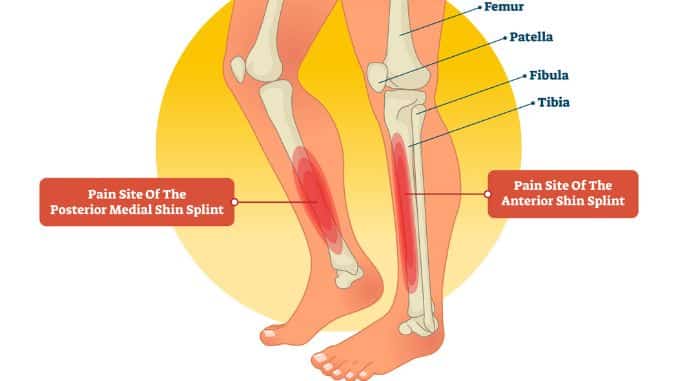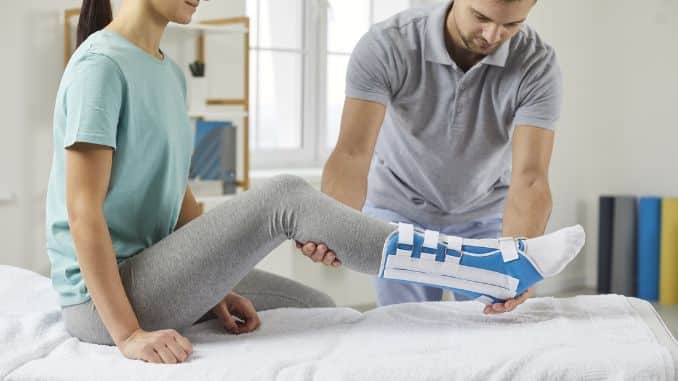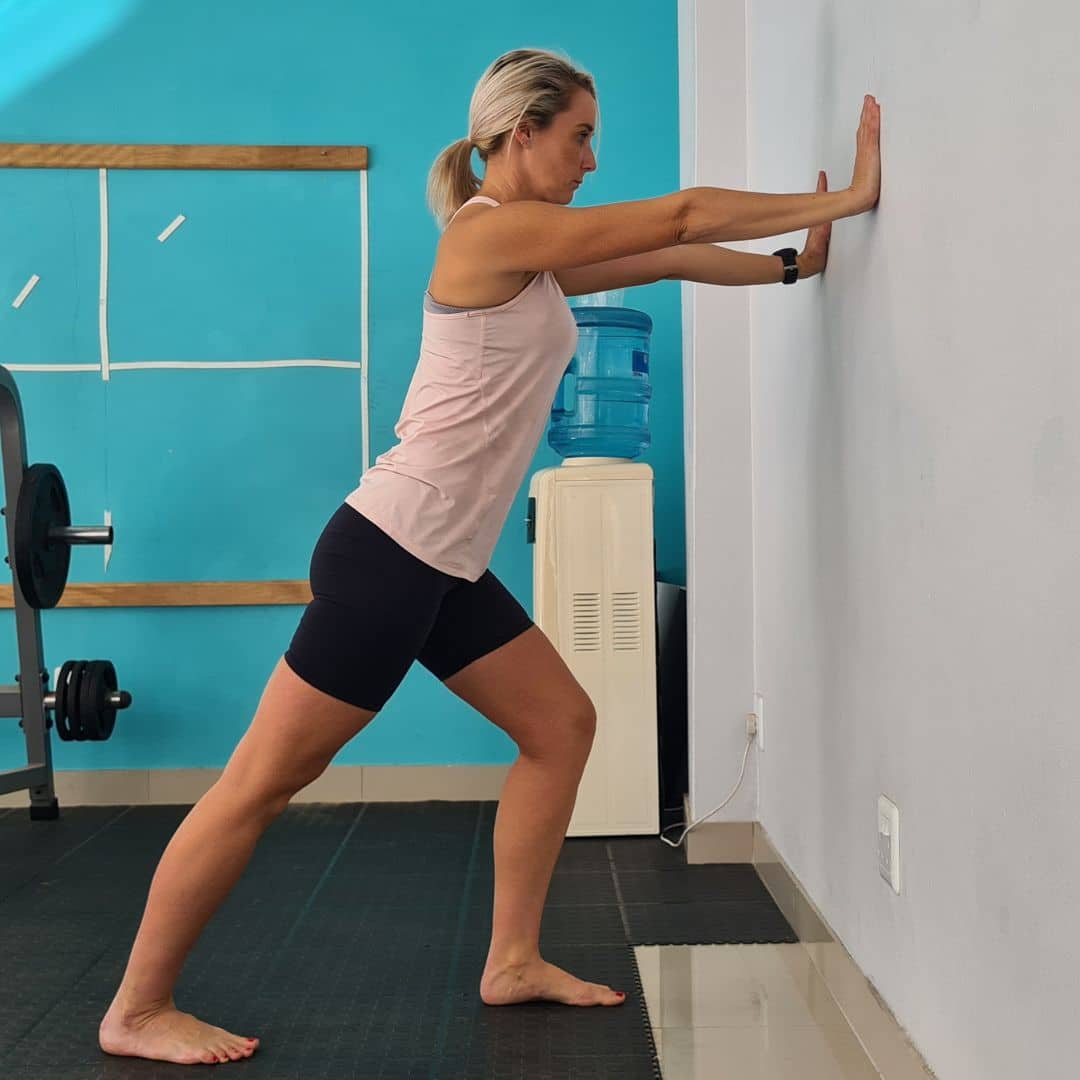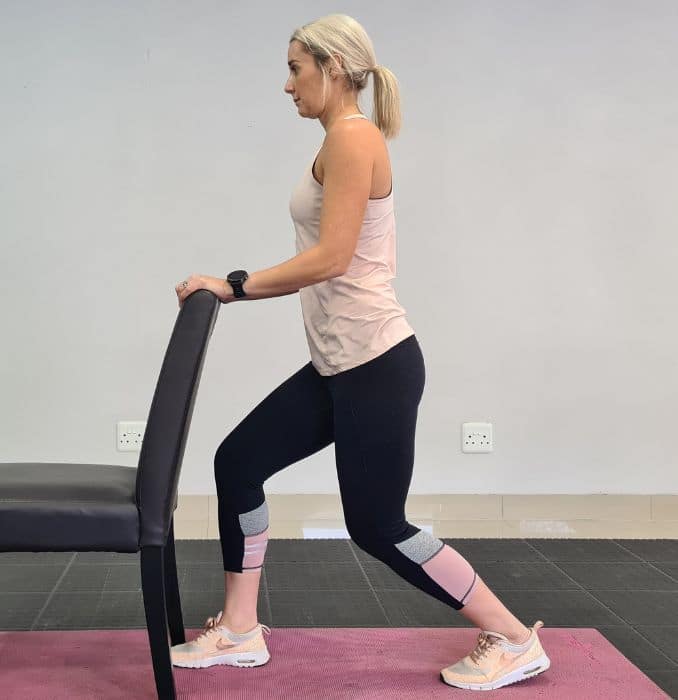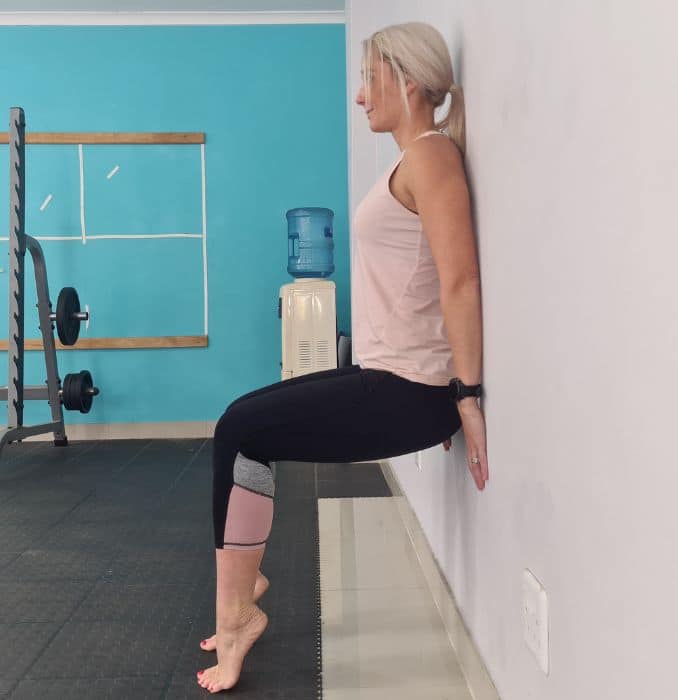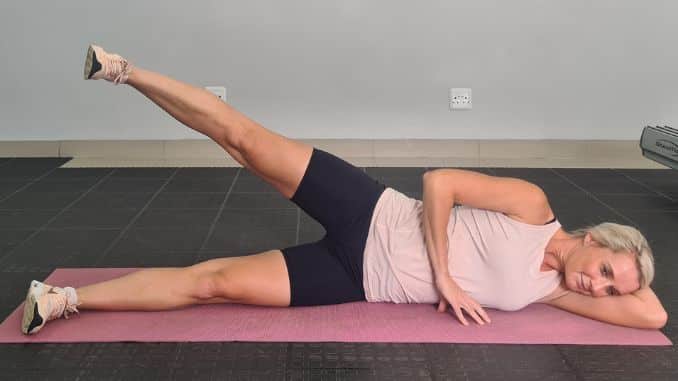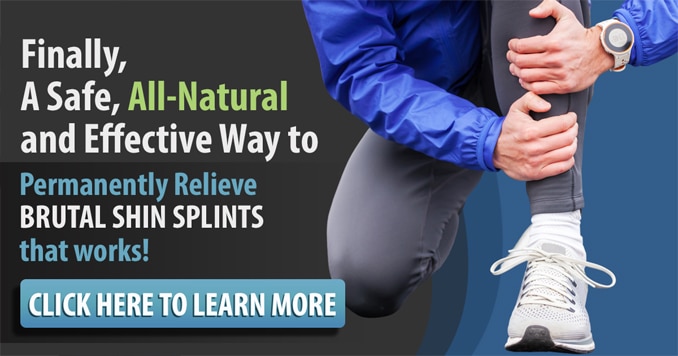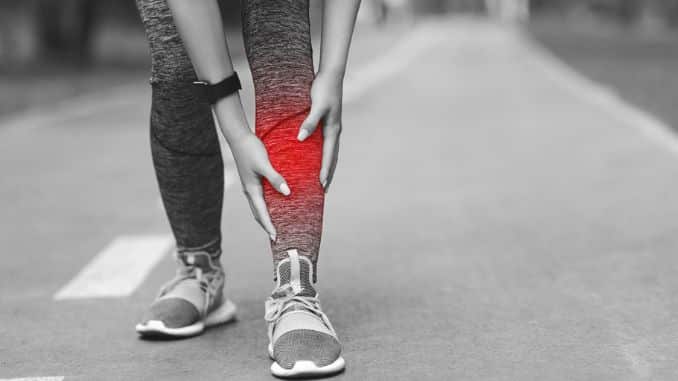
AfterDoes the front of your leg throb when you run? Or jump or when you’re just simply walking? If so, then you must be suffering from shin splints. Read on to know more about Shin Splints as well as Shin Splints Exercises.
Shin splints are a term used to describe pain anywhere along the shin bone or the large bone in the front of your lower leg. Long-distance runners most commonly experience an overuse injury known as medial tibial stress syndrome in medical terms. However, people who participate in recreational activities that require standing or walking on hard surfaces for a prolonged period of time and those who are prone to collapsed arches are also at a greater risk of having this condition.
When left untreated, shin splints can develop into more serious conditions like chronic compartment syndromes and stress fractures. Although, in most cases, conservative treatments have improved results.
Definition Of Terms
Before you proceed in reading the rest of this, it will be helpful to know the following medical terms for you to understand more about what the condition is full, its causes, treatment, and more.
- Supination – A movement of the joint where the weight of a person shifts more on the outside edge of the foot.
- Pronation – A movement of the joint where the weight of a person shifts more on the inside edge of the foot.
- Dorsiflexion – A movement where the foot and shin bone are relatively close to each other or when the foot is pointing upwards.
- Plantarflexion – A movement where the foot and shin bone are relatively far from each other or when the foot is pointing downwards.
- Inversion – A movement where the foot rolls on the outside edge of the foot so the sole of the foot faces medially or in the midline of the body
- Eversion – A movement where the foot shifts inwardly with the arches flattening.
The Anatomy And Causes Of Shin Splints
An overview of the anatomy of the lower leg is vital to understand what causes shin splints. It is usually the biomechanics of the lower legs and feet that causes the shin splints to develop.
One of the most common causes of shin splints is the excessive mobility of the subtalar joint. During gait (walking), the subtalar has two series of triphase motions, making it the functional center of the lower extremity. These motions include supination with inversion, plantarflexion, and adduction, or when your weight is more on the outside edge of your foot and is pointing downwards, and pronation with eversion, dorsiflexion, and abduction, or when your weight is more on the inside edge of your foot and is pointing upwards. During these motions, the primary muscles involved are the anterior and posterior tibialis, gastrocnemius, and soleus. When these muscles fail to support the subtalar joint efficiently, they develop shin splints.
The inflammation of the connective tissue called the periosteum is next to the subtalar joint excessive mobility. There are two major bones of the lower leg, the tibia (the innermost and larger bone) and the fibula (the outer and smaller bone). These bones are covered by a thin layer of cells that serves as a transition from the bone and the overlying soft tissue called the periosteum. The tibialis posterior, the soleus, and the flexor digitorum longus are attached to this structure. They also have an attachment to the rear and the innermost part of the tibia.
When frequent, repetitive stress is applied, the muscles and structures around the tibia, including the periosteum, lead to micro-tearing. And in some cases, this micro-tearing results in microfractures on the bone itself due to overuse. Over time, it takes time to heal together with the muscle, which results in pain and inflammation.
Lastly, the heel strike shock is also said to cause shin splints. This occurs especially with runners. It is said that when running, the subtalar joint is subjected to a high amount of force load 3-5 times higher than the actual body weight with every contact with the ground. During the anticipation of a heel strike, the toes are raised higher than usual to brace the impact then the foot is gradually lowered in contact with the ground to improve shock absorption. This kind of stress on plantarflexion causes injury to the tibialis anterior muscle, which runs from the upper part of the tibia along the front of the shin bone, and inserts in the cuneiform and metatarsals of the foot.
The Symptoms Of Shin Splints
People with shin splints will most likely feel a bilateral dull aching pain at the lower part of the front of both legs that worsens upon movement on the ground, such as walking, running, or jumping. Tenderness and swelling in the area are also present following this condition.
In the initial stage of shin splints, the pain is felt at the beginning of the Shin Splints Exercises or activity. Then it disappears during the exercise or activity and returns during the cool-down period. However, in the latter stage of the condition, where the development of a stress fracture occurs, pain may be continuously present throughout the Shin Splints Exercises or activity.
A stress fracture is a common complication of shin splints. The person feels pain and tenderness on the location of the anterior tibia when this occurs.
The symptoms of shin splints may be the same as with any other condition, so it is highly recommended to have it checked with your healthcare provider for an accurate diagnosis.
The Diagnosis Of Shin Splints
In diagnosing this condition, the individual’s medical history, including the past and present, will determine the factors and the characteristic of symptoms. The medical professional will conduct a comprehensive physical examination and medical interview to confirm this diagnosis.
Here are the following things that would be assessed and examined:
1. Pain Characteristics
You will be asked to describe the scale of pain felt, the location, the activities that relieve and aggravates it, and how you acquired it.
2. Physical Examination
In this examination, signs of foot pronation and excessive lateral heel wear are noted. While wearing shoes, the foot will appear to fall on the inside edges. We note valgus deformity in rearfoot alignment and low arches while barefoot.
3. Palpation
You palpate the medial, posteromedial, and anterolateral tibia. I expect and note tenderness and swelling in the area.
4. Range Of Motion
Using a tool called goniometry, the joint’s range of motion will be measured to note any limitation or excessive mobility. Analysis of the gait (walking) will be done to determine the flattening of the arches during stance motion and a fast, excessive striking of the foot into eversion, dorsiflexion, and abduction while running.
5. Orthopedic Test
Contraction of the anterior or posterior tibialis without any movement of the joint or Isometric contraction may elicit pain. The doctor may perform a muscle strength test for leg muscles as well.
6. Radiological Test
The doctor will perform an X-ray, an imaging test, to rule out or confirm stress fractures of the bones.
7. Neurological Test
Several tests will perform to rule out any neurological condition. The result should be negative.
The Treatment Of Shin Splints
The treatment goals for this condition are pain relief, function restoration, and prevention of re-injury.
-
Rest
This condition may require you to avoid all physical activity or exercise that could aggravate it and give your legs time to rest and heal. Pain and discomfort will gradually reduce with rest and limited activity.
-
Ice Packs
To reduce swelling and inflammation, you can use ice packs on the painful area. Do this 2-3x a day.
-
Medications
Taking an over the counter Non-steroidal anti-inflammatory drugs such as aspirin, ibuprofen, or naproxen will help in pain and swelling.
-
Shoe Insoles Or Orthotics
You can customize or buy shoe inserts for flat arches due to this condition.
Exercises For Shin Splints
Here are some exercises for Shin Splints;
I. Stretching Exercises
1. Gastrocnemius Calf Stretch
Stand facing the wall and put both of your hands against it. Then, put your right foot behind you with your knees straight and feet pointing straight ahead. Slowly bend your left knee forward until you feel a stretch in the calf of your back right leg while keeping your back straight. Lastly, hold this position for 30 seconds. Do this 3 times, 1-2 sets. Repeat on the other leg.
2. Soleus Calf Stretch
Stand facing the wall and put both of your hands against it. Then, put your right foot behind you with your knees straight and feet pointing straight ahead. Slowly and slightly bend your left knee forward, then with your right heel down, bend your right knee. Lastly, hold this position for 30 seconds. Do this 3 times, 1-2 sets. Repeat on the other leg.
3. Achilles Tendon Seated Stretch
Do a long sitting position. Then, bend your right knee and straighten the left knee. Afterward, with an exercise band or a towel, put it around the ball of your left foot. Now slowly pull it towards you until you feel a gentle stretch on the back of your legs. Lastly, hold this position for 30 seconds. Do this 3 times, 1-2 sets. Repeat on the other leg.
4. Tibialis anterior muscle stretch
Sit on your feet with both your toes pointing at each other. Put both of your hands on the floor in front of you. Then slowly raise your body up, resting on your toes. Hold this position for 30 seconds. Do this 3 times, 1-2 sets.
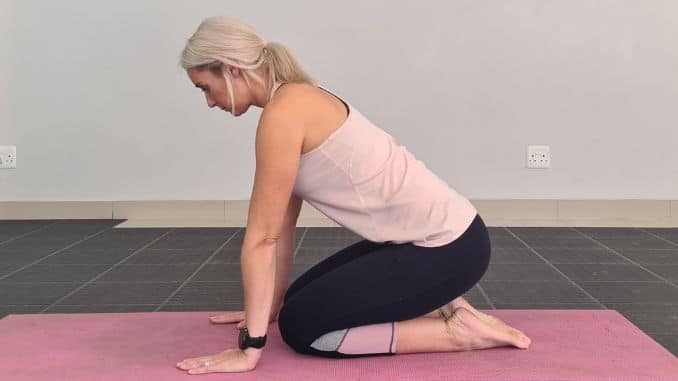 |
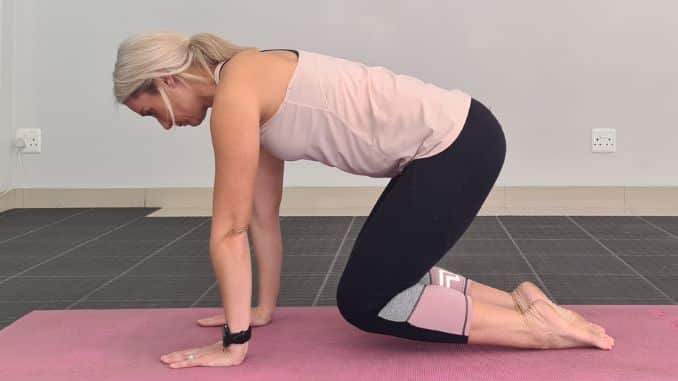 |
II. Strengthening Exercises
To do these Shin Splints Exercises, you may need a plyometric box or bench.
1. Step Ups
Stand in front of the box or the bench. Place your right foot on top of the box or bench, then push yourself up onto it. Then slowly step down with your left foot. Perform the next step with the left foot leading first, alternating them throughout the exercise. Do this 10 times, 1-2 sets.
 |
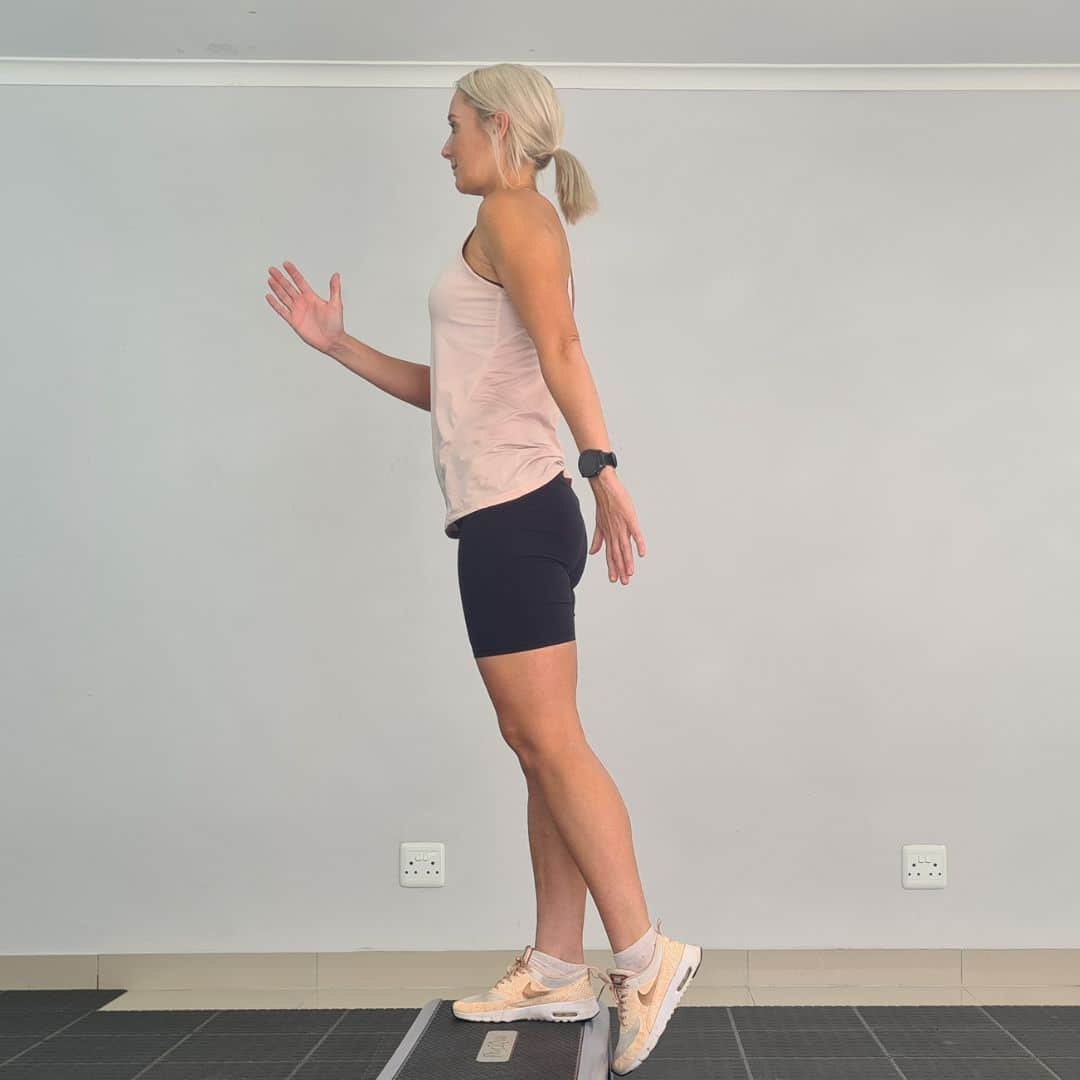 |
2. Soleus Squats
Stand with your back facing the wall. With feet and shoulder width apart, slowly slide down the wall while your knees are flexed to at least 80 degrees, then raise your heel. Hold this for 7 seconds, 10 times, 1-2 sets.]
3. Bent Knee Calf Raises
Step on the box and stand on it. Bend the knee slightly, then raise the heel slowly and control up and down with this position. Do this 10 times, 1-2 sets.
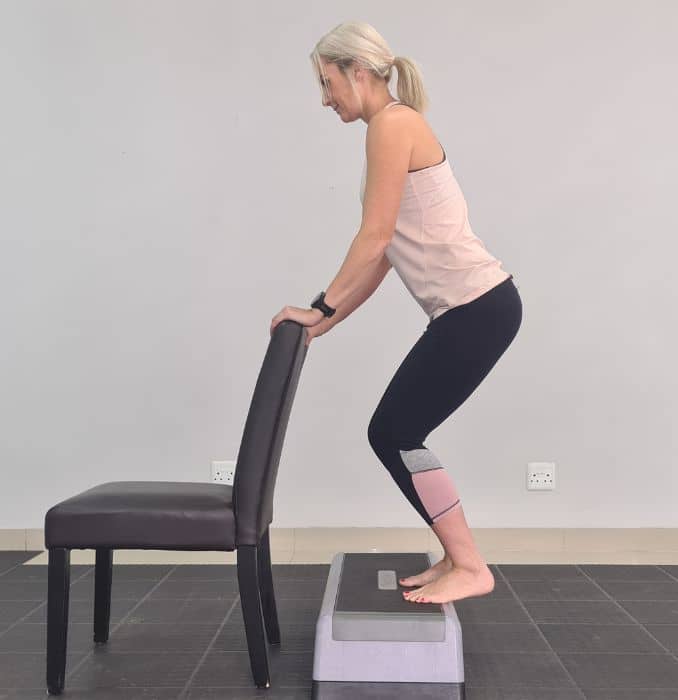 |
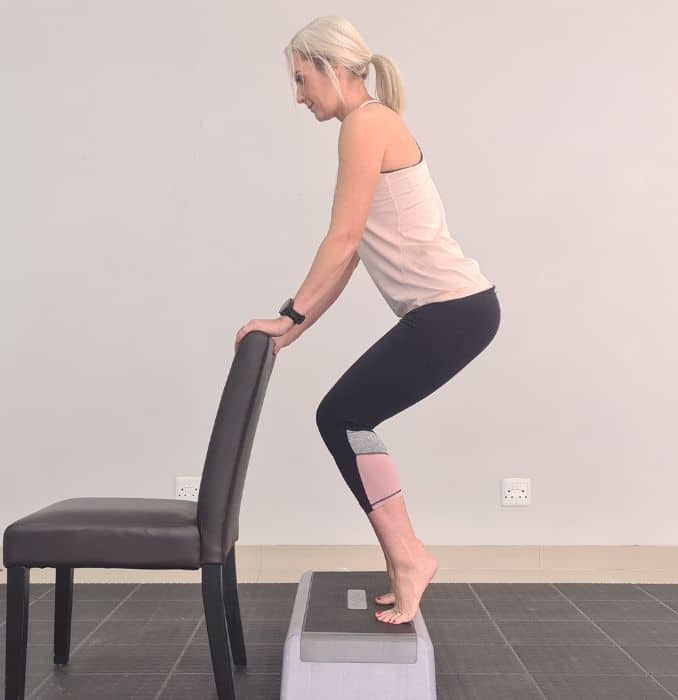 |
4. Single Leg Soleus Bridge
Lie down on your back with your knees bent. Then place the ball of your right foot on the edge of the box and straighten your left leg. Lift your buttocks and straighten your hips. Lastly, hold this for 7 seconds, 10 times, 1-2 sets. Repeat on the other leg.
5. Side Lying Abduction
For this Shin Splints Exercises, lie down on your right side on the floor. Bend your right knee for support. Then slowly lift your left leg up. Hold this for 7 seconds, 10 times, 1-2 sets. Lastly, repeat on the other leg.
8 Easy Ways To Prevent Shin Splints
-
Stretching Your Calves And Hamstrings
Tight muscles like the calves and hamstring may put you at a greater risk of having shin splints. Stretching them regularly will help in reducing the risk.
-
Prevent A Sudden Increase In Physical Activity
Do the exercises gradually and schedule physical activities evenly to avoid muscle fatigue. Alternating exercises such as walking, running, and jumping are recommended too.
-
Exercise On Soft Surfaces
When exercising on hard surfaces such as concrete or sidewalks, your bones and muscles absorb a great amount of force that could lead to overuse and fatigue of these structures, which could, later on, develop into shin splints.
-
Strengthen The Arch Of Your Foot
The structure of the arch can be altered over time with age, injury, and other medical conditions, as well as lack of physical activity. These can cause weakness and affect your legs and lead to shin splints. Strengthening this is important. Orthotics such as arch supports may be used to assist your foot.
-
Strengthen Your Hip Muscles
To help absorb shock and pressure during physical activity, you need to strengthen your hip muscles.
-
Buy Appropriate Athletic Shoes
It is better to have several athletic shoes and alternately use them during physical activity. This could help in your posture and the arch of your foot to prevent shin splints.
Being overweight could contribute to more stress and pressure on your bones and muscles. Maintaining healthy body weight is important to prevent this.
-
If You Are An Athlete, Have Your Techniques Assessed By A Physical Therapist
An incorrect form of running or jumping techniques could lead to shin splints and other conditions. A Physical Therapist can help you correct it and reduce your risk of developing shin splints.
Takeaway
Conservative treatments may be provided to people who are suffering from shin splints; most of the time, it is successful, and resuming activities before the condition is expected. However, while shin splints can be successfully treated, changes to the individual’s lifestyle may be required to avoid the recurrence of the condition that could lead to a more serious medical condition. Consult your doctor immediately.
Finally, A Safe, All-Natural And Effective Way to Permanently Relieve Brutal Shin Splints that WORKS. Introducing the Scientifically-Based Program to Quickly, Effectively, and Safely Heal Shin Splints – Shin Splints Solved. Order yours now!

